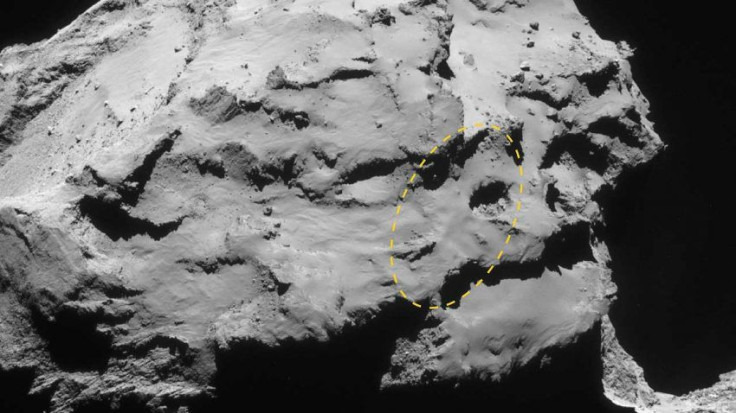Rosetta Space Probe Lands On Comet 67P, Ending 12-Year Mission

In March 2004, the Rosetta space probe launched from Earth as part of a $1 billion European Space Agency (ESA) mission to reach comet 67P/Churyumov–Gerasimenko. Now, over 12 years later—after reaching the comet in 2014 and dropping a small robot, called Philae, on the surface of the comet three months later—the probe has completed its final mission: to land on the surface of the comet it has been orbiting for the past two years.
A team in ESA’s control center in Darmstadt, Germany confirmed the landing after radio contact with the probe was lost at 11:19 GMT. This crash landing makes Rosetta the first probe to make a controlled landing on a comet.
"I can announce full success of this historic descent of Rosetta towards Comet 67P," said ESA mission manager Patrick Martin, reports the BBC. "Farewell Rosetta; you've done the job. That was space science at its best."
On its way down, Rosetta took and transmitted final high-resolution snaps of the duck-shaped comet’s icy surface from a little over 20 meters. What’s more, the streamed footage from the probe’s descent provided a clear look at one of the many deep pits on the comet, which turned out to be lined with spherical shaped structures that have been nicknamed by scientists as “goosebumps” or “dinosaur eggs.”
“They’re very important,” said Bonnie Buratti, a U.S. project scientist at NASA’s Jet Propulsion Laboratory, to CBS. “Prior to this mission, our whole idea about the formation of the solar system, how the planets formed, was very hand wavy, like ‘here’s this cloud of gas and dust, it collapses and then somehow miraculously these planetesimals, these things that are basically the comet, formed.’ It looks like these dinosaur eggs are the small particles, a few meters wide, they’re conglomerations of the dust from the interstellar cloud that collapsed. (That material) formed these dinosaur eggs, these boulders, that gravitate and then get bigger and bigger and finally form planetesimals.”
For those wondering if the Rosetta could later be resurrected to capture images later in the comet’s journey, the simple answer is no. According to ESA project scientist Matt Taylor, the technology would not work. And since the probe was not made for a landing, it is likely the soft crash landing broke parts of the Rosetta. In fact, the decision to make the probe land on the comet, which is on a course towards Jupiter and away from the sun, was a formality.
"We could have abandoned it in space or let it bounce off the comet and just switched it off. It wouldn’t have created any problem," Andrea Accomazzo, Rosetta flight operations director, told The Guardian. "Landing it is more a psychological thing."
During its 12 years mission, Rosetta has gathered an abundance of data for scientists to explore with 672 scientific papers published and 50 in the works. Courtesy of the probe, scientists were able to better understand how comets formed; proved that comets are some of the oldest bodies in the solar system; learned comets have a large amount of organic compounds and chemicals that may have made Earth habitable; and debunked previous theories suggesting that comets introduced water to our planet by analyzing ice on the comet and comparing it to water on Earth.
© Copyright IBTimes 2025. All rights reserved.






















